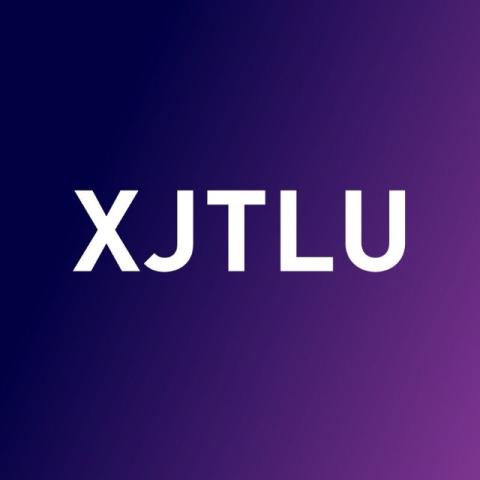
Content is king in EAP teaching
“Today’s topic is climate change.”
If you teach English for academic purposes (EAP), chances are you’ve opened a lesson like this. Perhaps you pulled up an article from The Guardian, followed it with some vocabulary work, and ended with a discussion task. That’s fine; many of us have done it. But what if we stopped treating content merely as context and began using it as the curriculum itself?
That is the invitation of content-based instruction (CBI): teaching language through engagement with authentic academic subject matter. It asks more of us as educators beyond simply incorporating real-world texts into our teaching. It demands that students become active constructors of disciplinary knowledge, not just passive absorbers of language.
CBI is gaining traction across Europe, East Asia and the Middle East. Yet it is far from universal. In many institutions, EAP still unfolds in skill-separated units, shaped by habit, not purpose. But the world is changing. Globalised higher education and workplace demands are shifting expectations. The question is no longer whether CBI belongs in EAP, but how deeply we are willing to implement it.
Below are four strategies we have used in our EAP classrooms to move beyond surface-level content and build more meaningful, inquiry-driven engagement with real-world texts. Though tested in EAP teaching, each has broader relevance for educators in other disciplines.
1. Mapping and framing to co-construct knowledge
CBI succeeds when abstract academic content becomes visible and structured for students. In my classroom, we begin with collaborative mind maps and concept maps created on whiteboards, poster paper or digital tools such as Miro, based on readings or lectures. Students identify key ideas, their relationships and the language linking them (for example, leads to, results in, contrasts with).
This mapping does more than organise content. It creates a shared reference point for classroom discourse, helps reveal misconceptions and turns reading into a social process.
In other disciplines:
In the sciences, mapping the process of photosynthesis or a chemical reaction pathway can prompt deep engagement with cause-effect language and system thinking. In history study, mapping the relationships between events in a conflict or revolution supports a clearer understanding of chronology and agency.
2. Socratic seminars as a path to critical dialogue
Socratic seminars have transformed our classrooms. During these sessions, students read a challenging text, annotate it and prepare questions. They then lead the discussion, using evidence from the text to justify their positions, challenge peers and extend the dialogue. Our role as educators is to moderate, not dominate, the conversation.
We recorded portions of the discussion for later language analysis, highlighting hedging devices, argument structures and discourse markers. The result: deeper reading, more confident speaking and a stronger sense of ownership over ideas.
In other disciplines:
A law lecturer might assign a case study and have students debate its interpretation. In engineering, students could discuss the ethical implications of an emerging technology, grounding arguments in the literature. The method is flexible, but the requirement is the same: close reading and thoughtful questioning.
- Advice on teaching English as a second language in higher education
- Build rapport to encourage Chinese students to speak up
- Why inclusion in EAP needs a rethink
3. Tools for student-led language discovery
Disciplinary literacy is not just about mastering content; it is also about understanding how ideas are expressed. We introduced students to Sketch Engine, a tool that enables language learners to search large text collections. Using guided searches, they analysed language behaviour in academic texts. For example, “How often is passive voice used in methods sections?” and “What collocations typically appear with challenge in psychology articles?”
Students then completed small projects, exploring the language features in their own disciplines. This shifted their role from language recipients to investigators of real-world academic practice.
In other disciplines:
A business lecturer might guide students in analysing how CEOs communicate uncertainty in shareholder letters. A nursing lecturer could help students study how patient conditions are described in medical journals. The insights gained go far beyond vocabulary; they build rhetorical awareness.
4. Tools for authentic content engagement
CBI is not only about what students learn but how. We have integrated digital tools to help students engage with content meaningfully. Students used Padlet to curate sources, Canva to create infographics and Excel to analyse simple datasets. Crucially, these tasks were always content-driven, not just decorative. In this case, digital engagement becomes a means of making sense of complexity, not just a presentation gimmick.
In other disciplines:
An architecture student could create a digital portfolio explaining design decisions. A biology student might use data visualisation to track environmental changes. These tasks develop not just technical skills but also the ability to communicate content persuasively and precisely.
Professional development as the foundation for effective CBI
CBI is demanding. It asks educators to be comfortable with both language and content, and to navigate the grey areas in between. At our institution, we found progress required shared planning, peer observation, small-scale action research and the development of disciplinary corpora. External workshops and microcredentials also played a role.
But none of this matters if the shift is only theoretical. CBI works when it is embodied in concrete, repeatable classroom practices: strategies that can be adapted, applied and reflected upon.
Rethinking content in EAP and beyond
If we want students to be critical thinkers, disciplinary communicators and confident academic contributors, we must move beyond treating content as mere input. CBI shows us another way.
Try mapping a single text. Run a seminar where students lead. Guide them in exploring language patterns in their field. Or set a content-rich digital task. Each step is small, but the cumulative effect is transformative.
Garth Elzerman is a lecturer and Catherine Sari a senior language lecturer at Xi’an Jiaotong-Liverpool University, China.
If you would like advice and insight from academics and university staff delivered direct to your inbox each week, sign up for the Campus newsletter.




